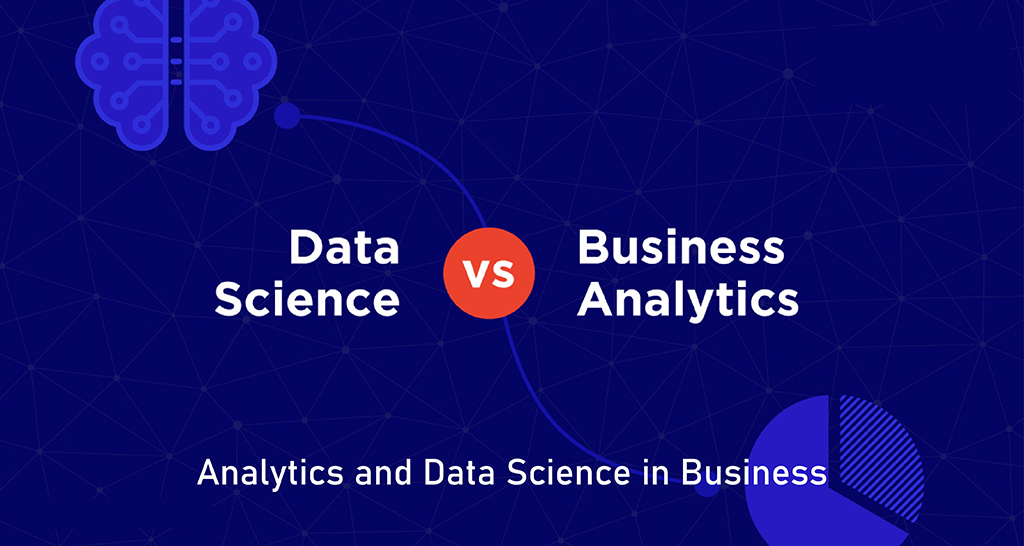In today’s world, where data is everywhere, businesses are relying on analytics and data science to gain an edge. With so much data being produced daily, companies that can effectively use analytics and data science have a better chance of succeeding. By using these tools, businesses can discover important information and make smart decisions.
Understanding Analytics:
Analytics is about exploring data in a structured way to find important patterns, trends, and insights. There are some types of analytics: descriptive, diagnostic, predictive, and prescriptive. Descriptive analytics summarizes past data, diagnostic analytics helps us to understand why things happened, predictive analytics uses past data to make predictions about the future, and prescriptive analytics gives us recommendations based on those predictions.
The Role of Data Science:
Data science is a field that brings together statistics, machine learning, programming, and expertise in a specific area to learn from data and gain valuable insights. Data scientists use different methods like cleaning up data, organizing it in a useful way, and creating models to understand complex datasets. They use tools like Python, R, and SQL to process and analyze data, find patterns, make predictions, and solve real-world problems using data.
Key Components of Analytics and Data Science:
- Data Collection and Storage:Having strong methods for collecting data is important to make sure we have high-quality and relevant information. Organizations use different approaches like automated data capture, surveys, and combining data from different sources. Storing and managing data efficiently is also crucial, and systems like data warehouses and cloud-based platforms help make it easy to find and access the data we need.
- Data Exploration and Visualization: Exploratory data analysis helps analysts understand what the data looks like, find patterns, and spot any unusual values. Data visualization techniques, like charts, graphs, and dashboards, make it easier to see and understand complex data. These visuals help people make sense of the information and interpret it in a meaningful way.
- Machine Learning and Statistical Modeling: Machine learning algorithms, like linear regression, decision trees, and neural networks, help data scientists create models that can predict things. These models learn from past data to make accurate predictions and group things into categories. Statistical modeling techniques, such as hypothesis testing and regression analysis, help find important information and understand how variables relate to each other
- Data-Driven Decision Making:The primary purpose of analytics and data science is to help make smart decisions. By using insights from data, organizations can make improvements, find ways to grow, make customers happier, reduce risks, and do better overall in business.
Benefits and Applications:
- Enhanced Operational Efficiency:Analytics and data science make things run more smoothly by finding and fixing problems, making workflows better, and automating tasks. This saves money, helps us use resources wisely, and makes people more productive.
- Improved Customer Experience: By studying information about customers, businesses can create personalized products and services, understand what customers like, and run marketing campaigns that are tailored to their interests. This makes customers happier, more loyal, and more likely to buy from the business.
- Risk Management:Using data to assess and model risks helps businesses spot possible dangers, detect fraud patterns, and find unusual events. This proactive approach helps them reduce risks and avoid losing money.
- Predictive Maintenance: By using data from sensors and machines, predictive analytics can predict when maintenance is needed, avoid unexpected breakdowns, and make sure assets are used efficiently.
- Market Insights and Competitive Advantage: By studying trends in the market, how people behave as customers, and what strategies competitors are using, businesses can learn important information. This helps them come up with new ideas, create innovative products, and stay ahead of the competition in the market.
In conclusion, analytics and data science are crucial for businesses that want to use data to make smart decisions. By using advanced techniques, companies can find important information, work more efficiently, make customers happier, reduce risks, and have an advantage over competitors. By making analytics and data science a central part of their operations, companies can succeed in a world where decisions are based on evidence, not just guesswork.

